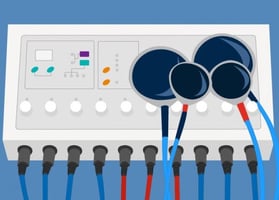Despite its effectiveness in treating severe depression, the use of electroconvulsive therapy (ECT)...
Finding a Piece of the ECT Puzzle
Psychiatrists have for decades successfully used electroconvulsive therapy (ECT) to treat severe depression that fails to respond to medication therapy, but precisely how it improves depression symptoms has remained a mystery. Researchers in Scotland report in the Proceedings of the National Academy of Sciences that they may have uncovered an answer, namely that it downregulates average global connectivity in the left dorsolateral prefrontal cortical region, an area that has been linked to major depression. It also decreased connectivity of brain networks in this region. Using fMRI scans, they found that this downregulation occurred at the same time the patients were experiencing depressive symptom improvement. The authors suggest that "a mechanistic understanding of ECT could allow researchers to replicate its therapeutic effects in a less-invasive fashion."
Read more about the use of ECT to treat severe depression in Psychiatric News, and f or an in-depth review of ECT treatment see American Psychiatric Publishing's Clinical Manual of Electroconvulsive Therapy.
Read more about the use of ECT to treat severe depression in Psychiatric News, and f or an in-depth review of ECT treatment see American Psychiatric Publishing's Clinical Manual of Electroconvulsive Therapy.
(image: Lightspring/shutterstock.com)






